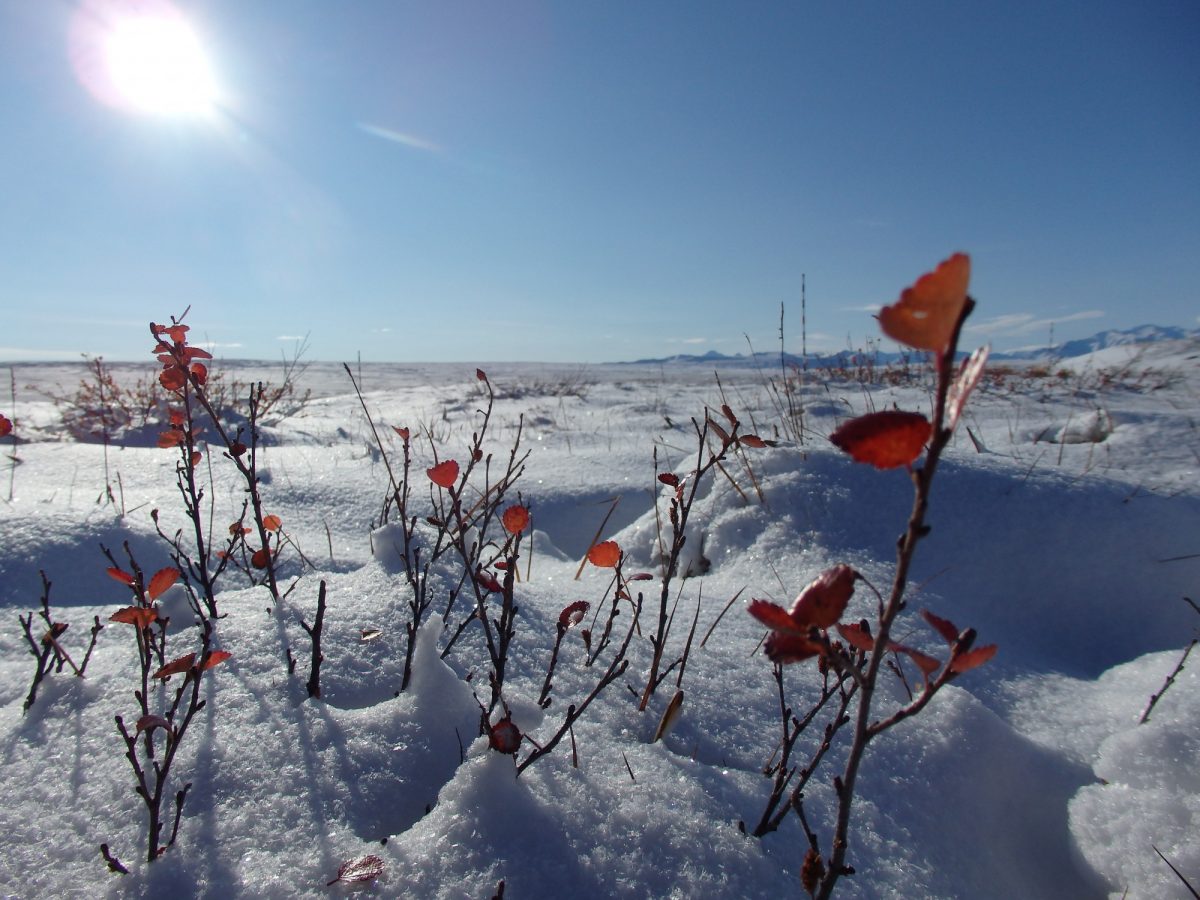
Arctic shrub, Betula nana Northern Alaska; Photo: Agata Buchwal
Declining Arctic sea ice drives divergent arctic shrub growth
The implications of shrub growth responses to sea ice-induced changes in climate might be widespread, with local to global consequences, including carbon uptake potential and albedo effects.
Arctic shrubs are the most widespread woody plants in the Far North and, like trees in lower latitudes, they form annual growth rings. These rings can be measured under a microscope to reveal the history of the past climates but also growth responses to the recent climate change that is vividly present in the Arctic. A new study shows how currently ongoing sea ice decline interacts with Arctic shrubs.
Arctic sea ice has been in steep decline over the last two decades. Meanwhile, tundra shrub abundance has been increasing in many regions of the Arctic. A new study published in the Proceedings of the National Academy of Sciences of the United States of America reveals that declining Arctic sea ice extent has been associated with increasing shrub growth in some regions of the Arctic and decreasing growth in other, generally drier, regions.
An international team from eight countries led by Dr. Agata Buchwal from Adam Mickiewicz University in Poznan, Poland gathered 23 existing shrub-ring chronologies and investigated their relationship to changes in sea ice extent, air temperature and precipitation.
One of the study’s lead co-authors is Dr. Julienne Stroeve, Senior Canada-150 Research Chair in Climate Forcing of Sea Ice at the Centre for Earth Observation Science at the University of Manitoba.
“Previous studies have suggested an increase in vegetation from sea ice loss as a result of enhanced warming, but this study shows that shrub growth responses are varied and the reasons seems to be a result of dry vs. wet conditions,” says Stroeve.
The project’s data set included birches and willows from Alaska, the Canadian Arctic, Greenland, Svalbard and Siberia.
“Our synthesis represents a major collaborative effort to disentangle one of the most complex issues in climate change research: heterogeneity of tundra shrub dynamics across the Arctic” says Buchwal.
While Arctic tundra greening and browning have received increasing attention over the past decade, one comparatively under-studied area is the ultimate role of sea ice dynamics and decline as drivers of terrestrial vegetation change. Sea ice decline is emerging as a powerful driver of warming and associated precipitation changes across the Arctic, and tundra shrubs are recognized as climatically sensitive proxies of Arctic environmental change. However, sea ice – shrub interactions had not been studied at the Pan-Arctic scale. “The comprehensive assessment reported in our synthesis not only addresses that knowledge gap, but also, more importantly, documents contrasting influences of declining sea ice on summer climate and shrub growth at the biome scale”, says Buchwal.
While the majority of shrubs take advantage of warming induced by sea ice decline and increase their growth, there is a remarkable group of shrubs that have progressively decreased their growth during the period of sea ice decline. What drives these divergent shrub growth responses to declining sea ice extent? Buchwal and team have shown that regional changes in sea ice extent are highly coupled with changes in local temperature and moisture availability. Specifically, sites with shrubs that grew less with the declining sea ice extent were characterized by increasingly drier conditions that hampered their growth.
Why we should care about the tundra shrubs? The implications of increasing heterogeneity in shrub growth responses to sea ice-induced changes in climate might be widespread, with local to global consequences, including carbon uptake potential and albedo effects. While tundra areas dominated by increasers have the potential to take up and store more carbon from the atmosphere, areas dominated by decreasers might be areas of increasing carbon loss to the atmosphere.
“Tundra shrubs will not announce the effects of climate change in the Arctic. Instead they patiently record their responses to change in their growth rings. And it is our task to learn from their records,” says Buchwal.
This new addition to our understanding of tundra shrubs can potentially improve the models used to forecast climate change. “I hope that this research can go into new parameterizations for climate models to better predict tundra responses,” says Stroeve.
Media Contact:
Sam Swanson
Communications and Outreach Coordinator
Centre for Earth Observation Science
University of Manitoba
Phone: +1 (204) 590-8591
E-Mail: samuel.swanson@umanitoba.ca






